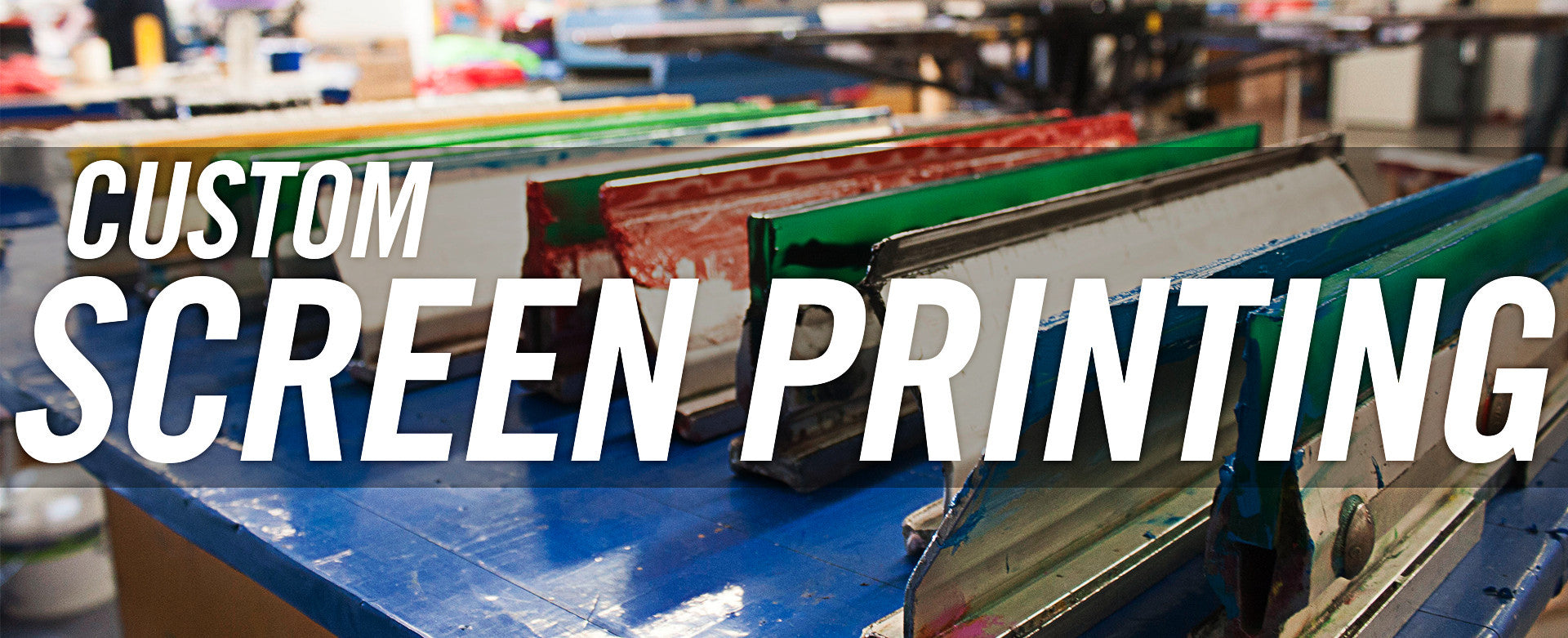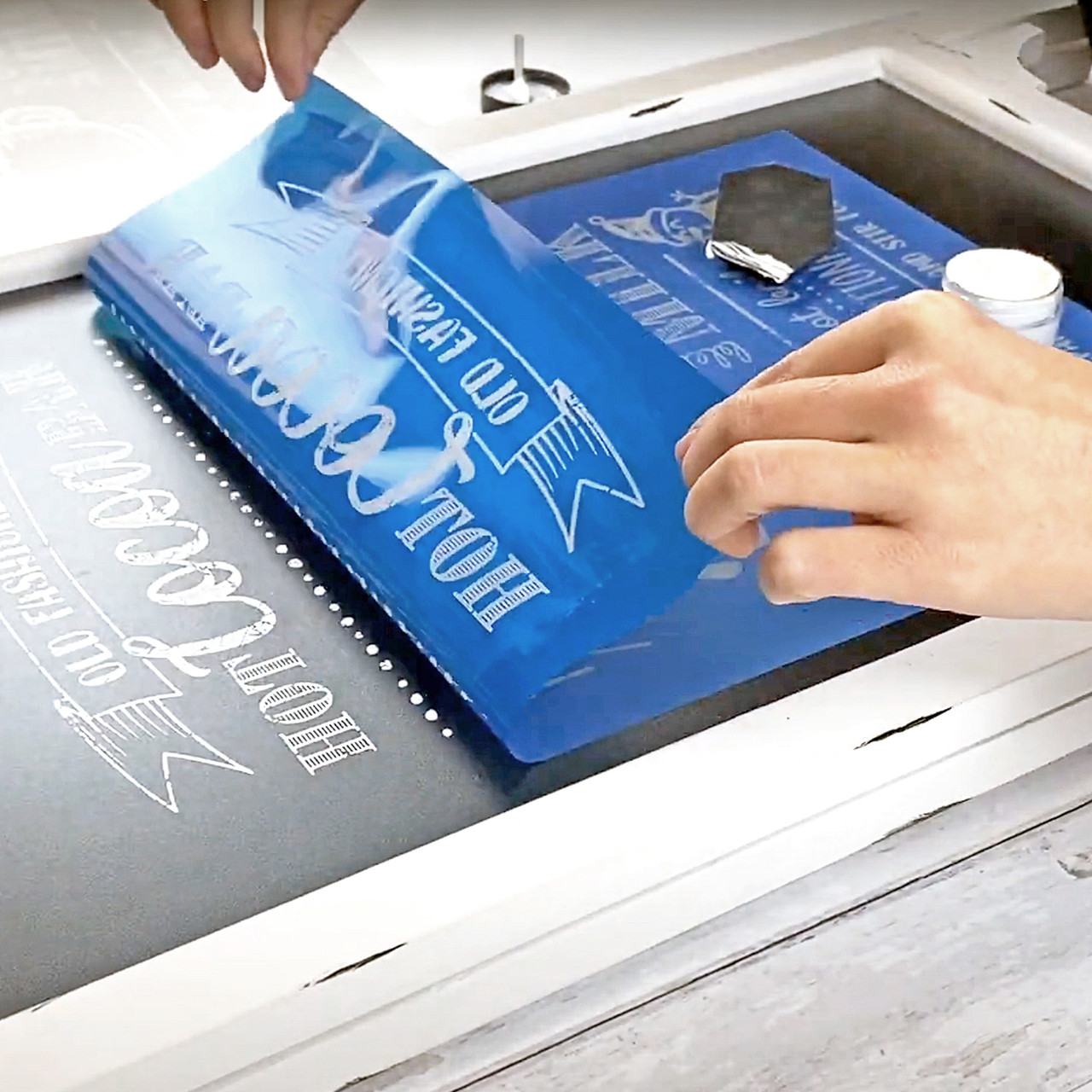Budget-Friendly T-Shirt Printing for Startups
Wiki Article
Screen Printing Uncovered: Every Little Thing You Need to Find Out About Tee and Garment Printing Methods
Screen printing is a fascinating technique that combines art with method, offering endless possibilities for creativity. Ready to explore the important components that make screen printing an art form?
The Essentials of Screen Printing: Just How It Functions
When you dive right into screen printing, you'll uncover it's both an art and a scientific research. At its core, screen printing involves developing a pattern, or screen, that enables ink to pass through only in details locations.Position the display over the fabric, then make use of a squeegee to push ink via the display onto the garment. Each step is important, and mastering them will boost your screen printing abilities, transforming easy garments into unique, meaningful pieces.
Kinds Of Screen Printing Techniques
Once you grasp the essentials of screen printing, it's time to discover the different methods that can boost your layouts. One popular method is standard display printing, where ink is pressed with a stenciled screen. This technique is excellent for strong, dynamic shades. There's water-based ink printing, which offers a softer feel and is environment-friendly, yet it needs a different strategy to curing.An additional choice is plastisol printing, known for its sturdiness and vivid colors, making it a favored for numerous brands. Experiment with halftone printing to create gradient results and elaborate styles.
Important Devices for Screen Printing
To achieve sensational outcomes in display printing, having the appropriate tools is fundamental. You'll need a strong screen printing frame, which holds the mesh that moves your style onto the garment. Next off, invest in top quality squeegees; these are necessary for using ink uniformly across the display.Picking the Right Inks and Products
When selecting inks and products for screen printing, you need to think about the kind of ink that functions finest for your job. Consider fabric compatibility to ensure your styles look last and terrific lengthy. Explore environment-friendly ink options to make your printing process more sustainable.Kinds of Screen Inks
Picking the ideal display ink is crucial for achieving dynamic, resilient prints that satisfy your task's requirements. There are a number of types of display inks to analyze. Specialized inks, such as glow-in-the-dark or metallic, can include distinct impacts to your designs.
Textile Compatibility Factors To Consider
Comprehending material compatibility is vital for achieving high-quality screen prints, especially given that different materials respond distinctly to numerous inks. When picking inks, consider the material type-- cotton, polyester, or blends. For cotton, water-based inks function well, using soft qualities and breathability. Polyester, on the various other hand, usually needs plastisol inks for much better adhesion and vivid colors. You may require to make use of a combination of both kinds if you're publishing on blends. Always examine your inks on example material to guarantee they adhere effectively and preserve color stability. Furthermore, remember that material weight and appearance can influence the last result, so choosing the ideal ink and material combination is important for your job's success.Eco-Friendly Ink Options
Environmentally friendly inks are coming to be a prominent selection for screen printers that intend to reduce their environmental influence while keeping high quality. When choosing inks, think about water-based inks, which are much less dangerous and easier to tidy up contrasted to standard solvents. These inks bond well with materials, delivering vivid outcomes without hazardous chemicals. You might likewise explore eco-solvent inks that use less volatile natural substances (VOCs), making them a safer alternative for both your health and the planet.Furthermore, look for inks made from renewable energies, such as soy or vegetable-based alternatives. By selecting the best inks and materials, you'll not only develop sensational styles but also add to an extra sustainable printing process. Make the button, and your prints will certainly show your dedication to the environment!
Preparing Your Layout for Display Printing

Submit Format Requirements
To guarantee your style looks lively and sharp on textile, you'll require to pay close focus to file layout requirements for screen printing. Start with vector data like AI or EPS, as they can https://10-9design.com/ be scaled without losing quality. If you make use of raster images, decide for high-resolution data, such as TIFF or PNG, preferably at 300 DPI. Avoid making use of JPEGs, as they can lose clearness when resized. Also, make certain your layout has a clear history to avoid undesirable white sides on your prints. Lastly, maintain shade settings in mind; CMYK is typical for display printing, so transform your RGB creates appropriately. By complying with these guidelines, you'll set your art work up for an effective print.Color Splitting Up Techniques
Shade separation is an essential action in preparing your style for screen printing, and mastering it can considerably enhance your print top quality. You'll need to break your style into private shades, as each color requires a different screen throughout printing. Start by determining all the colors in your style and create layers each. You can use software like Adobe Photoshop or Illustrator to isolate and different shades efficiently. Be particular to save each layer as a separate documents, usually in a format like TIFF or PSD. This precision not just assures accurate color representation yet also enhances the printing process. By taking notice of color splitting up, you'll accomplish vibrant and specialist lead to your screen-printed garments.Resolution and Dimension
Achieving the most effective outcomes in screen printing begins with guaranteeing your style has the right resolution and size. Preferably, your artwork must be at the very least 300 DPI (dots per inch) for sharp, clear prints. If you make use of lower resolution, your final product might look less than professional and pixelated.When it concerns size, think about the dimensions of your print area. Design your art work to match the last print dimension, ideally developing it in the actual dimensions you'll be publishing. By doing this, you'll prevent any unanticipated scaling problems.
Constantly check your style in both vector and raster formats. Vector graphics can be scaled without losing high quality, making them perfect for display printing. Preparing appropriately will guarantee your style looks fantastic on every garment!
Step-by-Step Display Printing Process
Display printing is a vibrant procedure that permits you to develop vivid designs on numerous surface areas. To obtain started, you'll need a screen, emulsion, and your picked ink.Pour ink onto the display and use a squeegee to push the ink with the pattern onto the fabric. Raise the display meticulously and let the print dry. You have actually efficiently screen printed your design.
Tips for Successful Screen Printing Projects
While you're diving right into your screen printing jobs, bear in mind that preparation is crucial to success. Beginning by collecting all your materials-- inks, garments, mops, and screens. A tidy work space assists prevent undesirable mistakes, so clean before you begin.Next, validate your artwork is high-resolution and correctly sized for your garment. Examine your screen for appropriate direct exposure and clean it extensively to avoid spots. When mixing your inks, comply with the producer's standards to achieve the ideal uniformity.
Throughout printing, apply also pressure with your squeegee for constant outcomes. Do not rush; take your time to confirm each print fulfills your criteria. After printing, let your garments dry entirely prior to dealing with or packaging them.
Finally, constantly keep a sample of your help future reference. In this manner, you can examine your progression and improve your methods with time. Happy printing!

Regularly Asked Inquiries
How much time Does It Require To Establish a Display Printing Task?
Establishing up a screen printing task generally takes around thirty minutes to an hour. You'll prepare the screens, mix inks, and adjust the press. The time differs based on intricacy and experience, so stay organized!Can I Publish on Various Fabric Keys In Utilizing the Very Same Strategy?
Yes, you can print on different textile kinds making use of the same technique, yet you'll require to adjust your setups and inks. Some materials take in ink differently, so experimenting guarantees the most effective outcomes for every product.What Prevail Errors to Prevent in Screen Printing?
When screen printing, prevent typical errors like using the wrong ink, overlooking appropriate direct exposure times, or missing pre-press checks. Always test your arrangement and maintain clean screens to assure high quality results each time.Exactly How Can I Appropriately Clean and Maintain My Display Printing Equipment?
To effectively clean and keep your screen printing tools, you ought to on a regular basis wash screens with suitable solvents, examine squeegees for wear, and ensure all devices are saved dust-free and dry. Uniformity enhances and prevents costly repair work performance.Is Screen Printing Environmentally Pleasant Contrasted to Various Other Approaches?
Screen printing can be more eco-friendly than other methods, specifically if you make use of water-based inks and eco-conscious materials. By choosing sustainable products and practices, you decrease waste and minimize your effect on the world.Screen Printing Uncovered: Everything You Required to Know Concerning Tee and Garment Printing Techniques
At its core, screen printing involves producing a pattern, or display, that permits ink to pass via just in specific areas. Setting the display over the textile, then use a squeegee to push ink with the display onto the garment. One popular approach is conventional display printing, where ink is pushed via a stenciled display.When picking inks and products for display printing, you require to take right into account the kind of ink that functions ideal for your task.
Report this wiki page